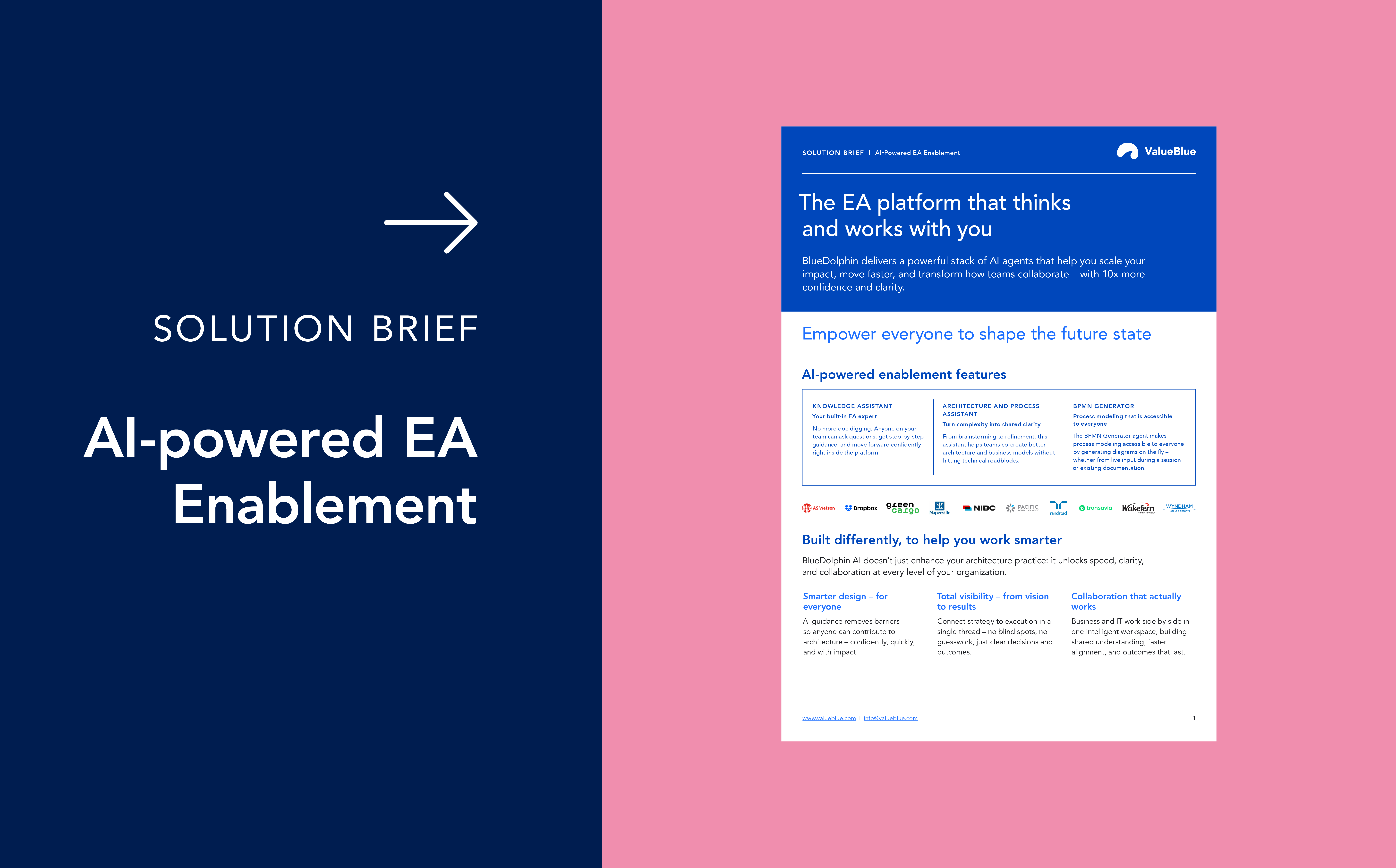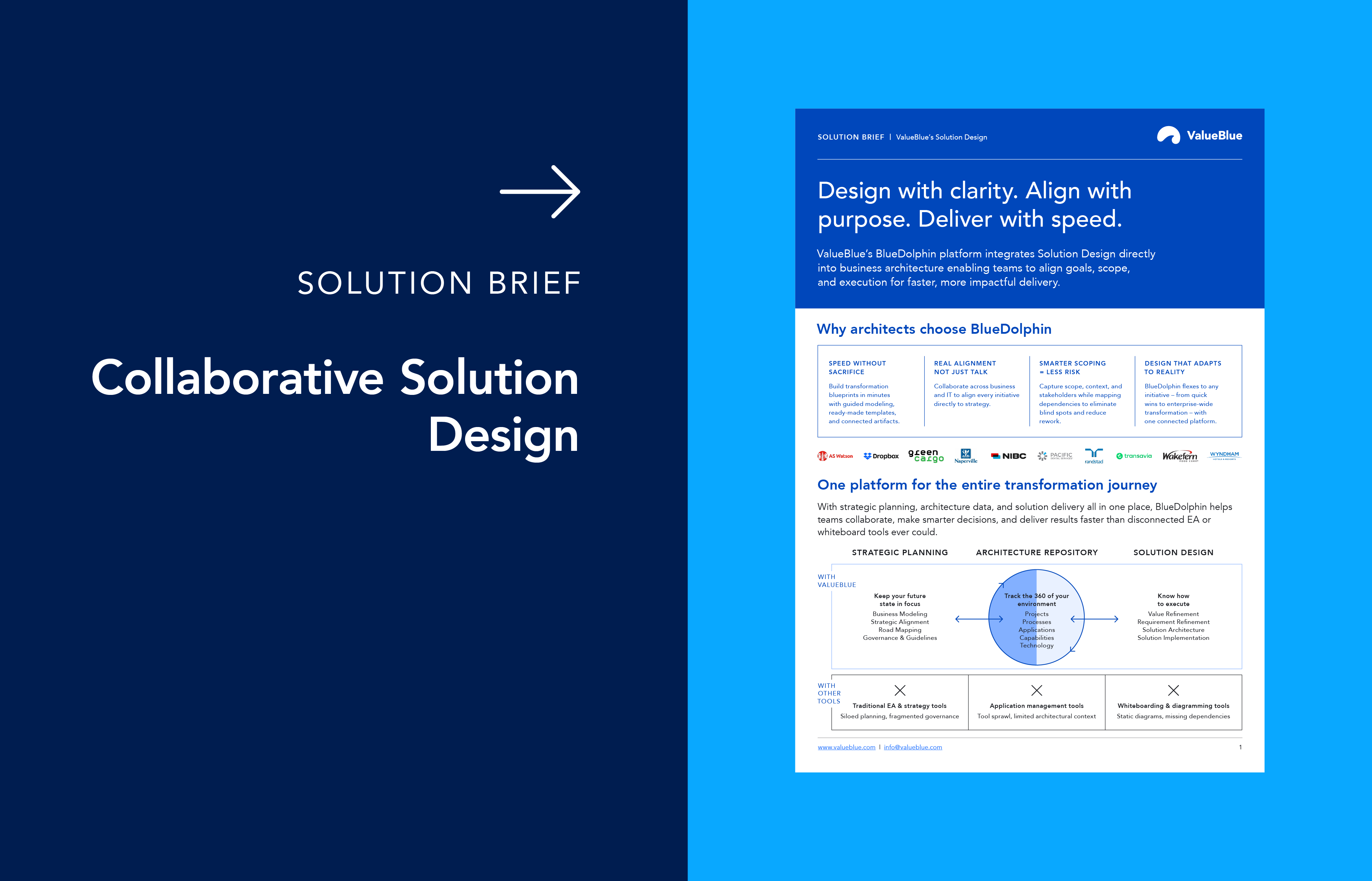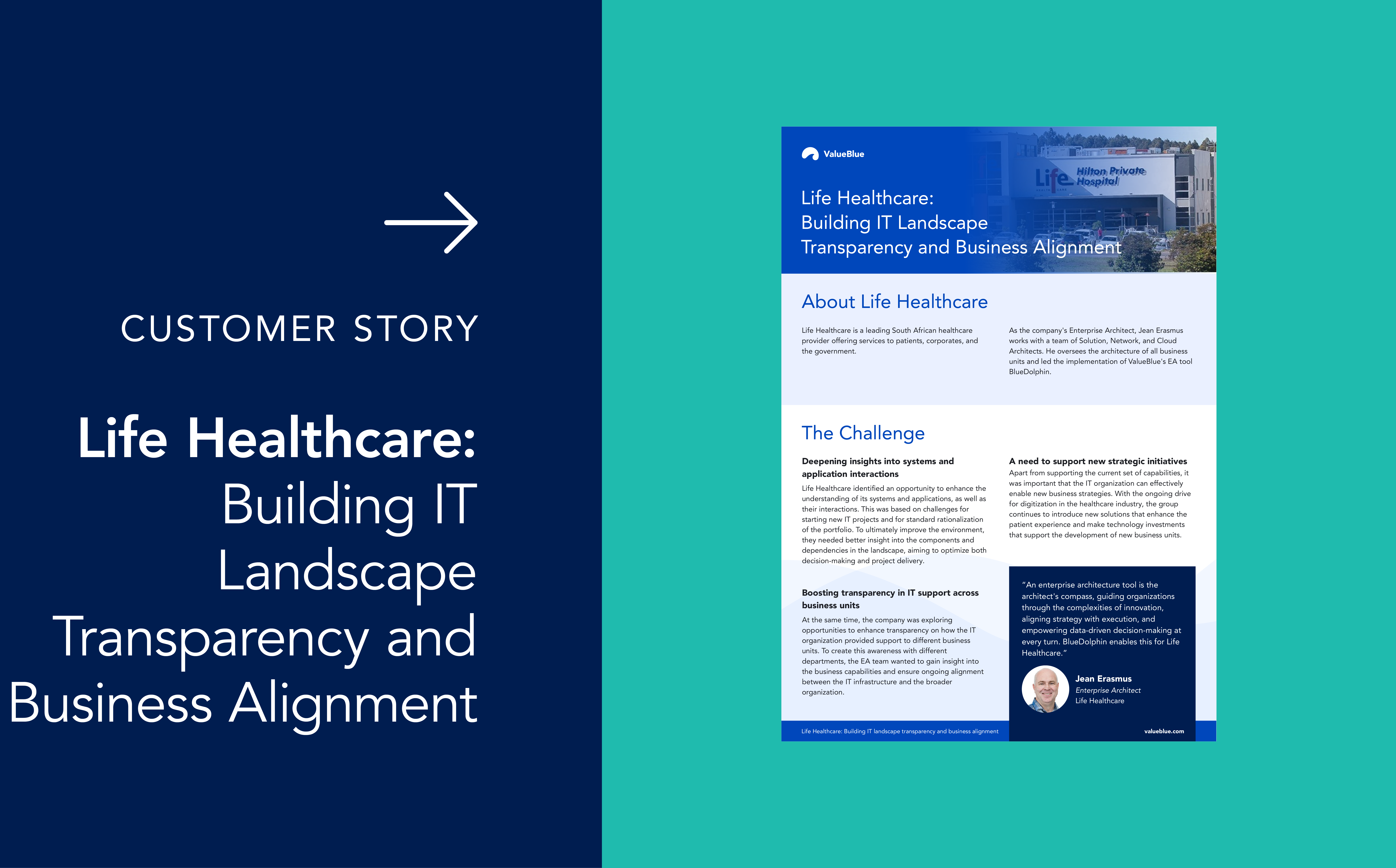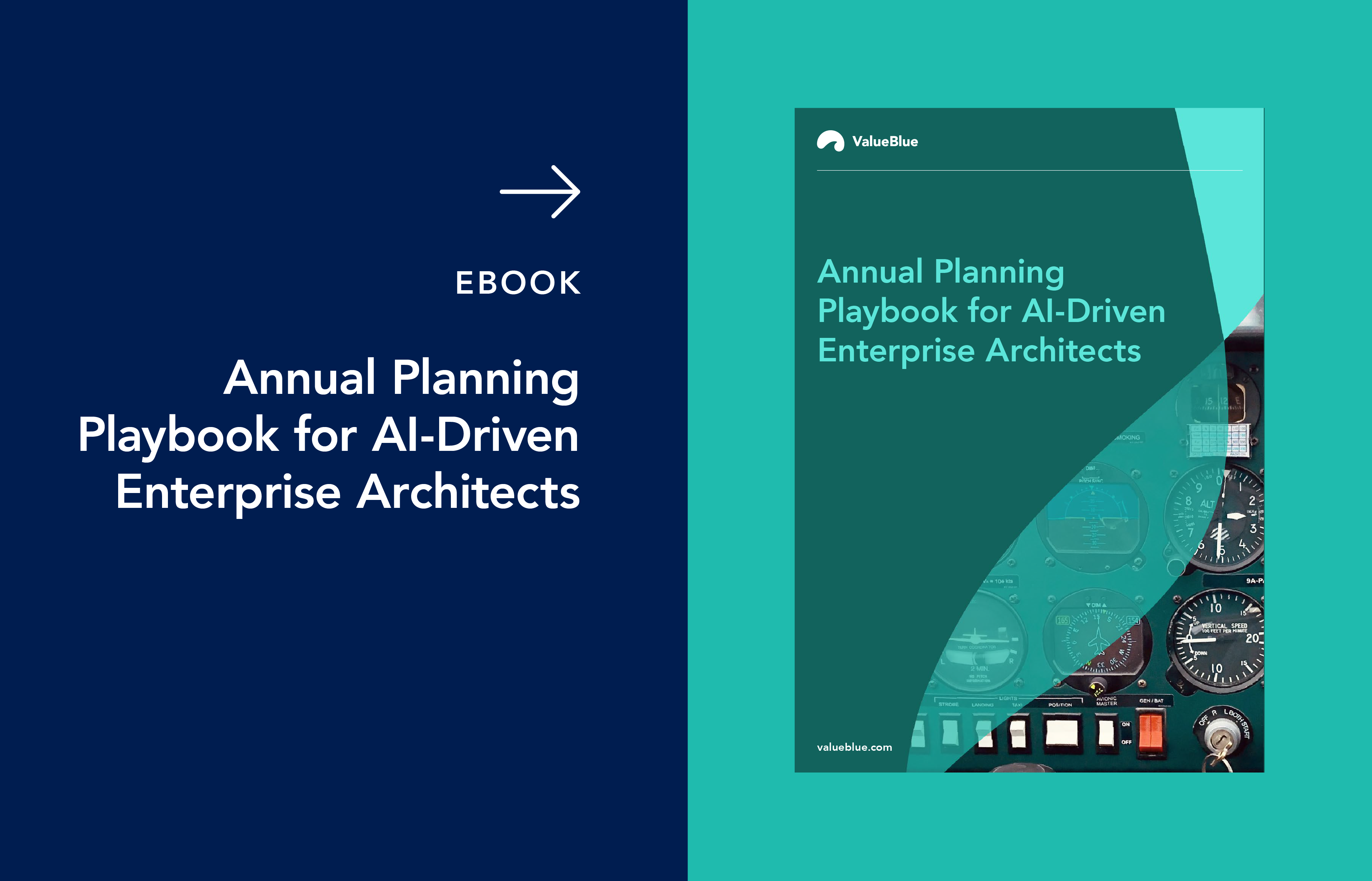Business Process Optimization in Higher Education
In the first blog in this series, we introduced a guided approach to tackling business transformation. We then described a commonly used technique for impact analysis and subsequent prioritization in Business Capability Modelling.
In this blog, we focus on one of the tangible pieces of realizing business strategy – optimizing business processes. Also, we share an approach taken by one of ValueBlue’s higher education clients.
What is Business Process Modelling?
Let’s start with the basics, which is the definition of process modelling:
Business Process Modelling (BPM) is the action of capturing and representing processes of an enterprise (i.e., modelling them) so that the current business processes may be analyzed, applied securely and consistently, improved, and automated.
In essence, BPM maps out the individual steps and activities in a process. It provides a visual way to understand, analyze, and improve processes, so it can help an organization become more efficient and effective. Even more interesting is the "why” of process modelling and how process modelling can support the "why".
Why is Business Process Modelling important?
Of course, BPM does not apply only to higher education. All for-profit and not-for-profit organizations operate based on defined business processes, so they must be as standardized as possible. Some of the common use cases for process modelling include:
- Ensuring adherence to laws and regulations to avoid legal penalties and maintaining the company's reputation. Business Process Modelling helps systematically identify, document, and manage security and compliance requirements (e.g., to comply with GDPR).
- Innovation: Innovation is essential for staying in sync with market and technology advancements. Business Process Modelling supports innovation by providing a clear framework for efficiently experimenting with and implementing new ideas, such as business model re-design.
- Improve student experience: Higher education is more competitive than ever, so delivering a superior experience is crucial for attracting students and possibly continuing their journey. Business Process Modelling allows organizations to design and optimize customer-facing processes to ensure a seamless and engaging experience.
- Increase knowledge sharing: When done effectively, business process modelling enhances organizational learning and productivity. It documents processes and workflows, making sharing information and best practices across the organization easier.
- Save costs and provide a better experience through digitalization: It transforms traditional processes using digital technologies, improving efficiency and accuracy. Business Process Modelling is fundamental in mapping current processes and identifying opportunities for digital transformation and automation in optimal future states.
Business Process Modelling: Not just a pretty picture
When thinking about processes, organizations typically think about a pictorial representation of these to ensure they can be shared, understood, and hopefully used as guidance to perform specific tasks based on the role in the organization.
But the visual part is only the beginning. Its logical consequence is diving into elements of process management, which can start with extending the information captured to include:
- Who owns the process so any updates/changes can be requested.
- How critical is the process to prioritize the information collected around it.
- Connections to other elements in the institution to understand the impact of change in other areas, for instance if the student records system is being migrated, which processes will be impacted.
The flow itself does not give an accurate 360-degree view. Still, aligning it with other dimensions of people, applications/systems, data – and even strategy – provides true transparency and the ability to make changes faster.
Business Process Modelling: A process for optimizing... processes
As mentioned above, the visual is just the first part of the puzzle. If there are currently no processes documented at all, a boil-the-ocean approach is not pragmatic at all. A simple way of working, adopted by a higher education organization that is ValueBlue's partner, looks as follows:
- Identify critical high-level processes – start with the high level, create a process ‘catalog’, and work through different levels of abstraction. Don’t jump into the details and model all the steps right away (e.g., all the tasks that an admin clerk would follow to register a student in a university). Alternatively, you can start by listing key processes of particular departments and working outward from there.
- Fill in basic details: the process owner, summary or description, and criticality.
- Identify dependencies – this does not have to be very complex: systems used in the process, data processed, roles involved. Dependencies can also be recorded against the detailed process steps level.
- Collaborate with the owner to validate the information so you don't make assumptions. The person(s) completing the details could be the owner or a business analyst, which makes teamwork crucial.
- Set up review dates to re-validate regularly (this is not a one-and-done exercise!). Don't leave process documentation out of date. Instead, develop a habit of planning reviews.
Although completeness is important, attempting to document every process is neither easily achievable nor sensible. An even better starting point is from the perspective of a project or processes that impact part of a solution design: document just enough and start building out gradually.
Sharing and using the processes
While just a select few individuals can take the above steps, it is important to realize that unless the information is available for everyone within the organization, the work put into documenting it will most certainly be wasted.
There are various ways to share process information with team members or subject matter experts. It can be a mixture of diagrams, spreadsheets, or documents. The format is unimportant, but having a central location is. A dedicated repository-based platform can help, but it is more important to follow a repeatable method.
Adopt Business Process Modelling today!
Process modelling is an approach that helps organizations optimize efficiency, ensure compliance, and foster innovation by mapping out key workflows with elements like ownership, dependencies, and impact analysis. Success depends on effectively sharing and using the models within the organization, keeping them updated, and integrating them into daily operations. This ongoing, collaborative process drives continuous improvement and enhances stakeholder experience.
As you explore Business Process Modelling, you may also be interested in discovering how our tool can help you make the most of it. Contact us for a free demo today.





